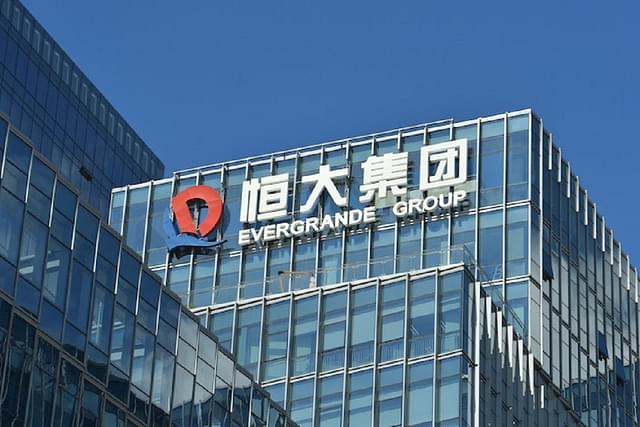News Brief
China Responsible For Market Crashes In Three Out Of The Last Five Years
Sourav Datta
Sep 22, 2021, 05:30 PM | Updated 05:30 PM IST
Save & read from anywhere!
Bookmark stories for easy access on any device or the Swarajya app.

The recent Evergrande crisis has brought the Chinese influence on the global economy and markets into focus. Evergrande is the second-largest property developer in China. With the Chinese government’s focus on infrastructure spending, Evergrande rode the property boom to conquer the property market.
Reportedly, it has built 1,300 projects across 280 cities. The rapid expansion was funded by $300 billion in debt. This wouldn’t have been an issue if the company could have monetised its projects on time.
However, with lower property sales, the company has been facing cash flow mismatches resulting in a ratings downgrade. The company has to pay out a coupon of $83.5 million on 23 September. The company’s bondholders include several large firms like BlackRock, UBS, HSBC and others.
The ripple effects might not only affect the credit markets but also stocks and commodity markets as Chinese demand falls. The development occurred at a time when the Chinese government has been trying to cut down the infrastructure sector’s dependence on growth.
After the news broke, global markets have been quite jittery. Indian markets have, however, remained relatively stable until now.
However, this wouldn’t be the first time when developments in China would have caused a major fall in the markets. China is responsible for major market routs in three of the previous five years.
Retail Investor Crisis Of 2015
In 2015, China’s stock market saw an unprecedented rise, led by borrowed funds. The Chinese stock markets are dominated by retail investors, who control 85 per cent of the market. These investors would borrow heavily, and invest money into the markets.
Just a few years ago, China had unleashed a stimulus package to help the country overcome growth issues after the 2008 financial crisis. As a result of the package, the economy recovered. Stock investing was also encouraged by the government, as it wanted citizens to reinvest money into the economy. Until 2010, there were strict regulations on trading with borrowed funds. However, laws were loosened to encourage more participation in the stock markets.
However, the market participants lacked any expertise in vesting. According to reports, almost 66 per cent of Chinese investors had not even graduated high school. The market peaked on 12 June 2015 when the Shanghai Index reached 5,166 points, a 150 per cent in just a single year.
However, the rise in the Chinese markets was not led by fundamentals. The Chinese markets soon collapsed and so did the global markets, which had been on a bull-run until then. On 24 August 2015, the Bombay Stock Exchange’s Sensex crashed by 1,624 points while the Nifty fell by 490 points. With intervention, the Chinese market recovered, but again witnessed a fall in mid-December2015.
Growth Concerns In 2016
In 2016, the decline in global markets continued, aggravated by reports of slower growth in China. This clearly showed China’s importance in the global economy. Commodity prices also fell in anticipation of lower demand, with crude falling to below $30 a barrel.
Between June 2015 and February 2016, the Sensex fell by 23 per cent. The NASDAQ fell by 16 per cent during the same period. While the Chinese government had been intervening in the markets and the economy, there weren’t many signs of revival.
China continued reporting lower growth numbers despite the Chinese government’s devaluation of the yuan in 2015 to spur the economy into action. February 2016 saw the BSE Sensex lose 1,600 points in four consecutive sessions.
Covid Pandemic In 2020
The most recent turmoil in the markets was caused by the coronavirus pandemic. The NYSE Composite Index fell by more than 30 per cent during the beginning of the pandemic. The Sensex fell by 34 per cent within a month. The pandemic brought disruptions in global supply chains and a slowdown in the economy.
Global growth which was already slow, received a blow with the pandemic. The fall in the Indian stock markets triggered a circuit breaker, and the exchanges stalled trading for some time for the markets to cool down. While the markets have recovered with the help of low interest rates, stimulus measures and an entry of new investors, the economy continues moving slowly. Some sectors are yet to reach pre-pandemic levels of revenues.
In the past, the US markets and its economy were closely observed by traders and investors to predict the market’s behaviour. But with China’s rise to prominence in the global financial space has changed the dynamic. Even the US-China trade war in 2018 caused the global markets, including India, to fall by 10-15 per cent in a few months. The current Evergrande crisis could be the reason for the next stock market rout.
Save & read from anywhere!
Bookmark stories for easy access on any device or the Swarajya app.
Support Swarajya's 50 Ground Reports Project & Sponsor A Story
Every general election Swarajya does a 50 ground reports project.
Aimed only at serious readers and those who appreciate the nuances of political undercurrents, the project provides a sense of India's electoral landscape. As you know, these reports are produced after considerable investment of travel, time and effort on the ground.
This time too we've kicked off the project in style and have covered over 30 constituencies already. If you're someone who appreciates such work and have enjoyed our coverage please consider sponsoring a ground report for just Rs 2999 to Rs 19,999 - it goes a long way in helping us produce more quality reportage.
You can also back this project by becoming a subscriber for as little as Rs 999 - so do click on this links and choose a plan that suits you and back us.
Click below to contribute.





